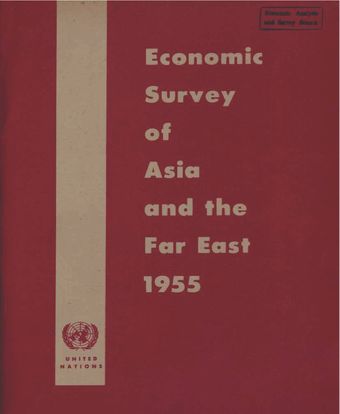Burma

- Author: United Nations Economic and Social Commission for Asia and the Pacific
- Main Title: Economic and Social Survey of Asia and the Far East 1955 , pp 57-62
- Publication Date: December 1955
- DOI: https://doi.org/10.18356/13793fce-en
- Language: English
The emergence of a buyer’s market for rice, Burma’s staple export and main foreign-exchange earner, coincided with the beginning of the arduous implementation of its 8-year economic and social development programme. As the export price of rice fell on the one hand, development expenditures with a high import content gained momentum on the other. As a result, the foreign-exchange reserves of the country registered a steady and continuous decline from a peak level of K 1,269 million at the end of June 1953 to a level of K 544 million at the end of June 1955, when the minimum international reserves, required of the Union Bank to hold against the currency circulation plus deposit liabilities of the bank stood at K 235 million.
© United Nations
ISBN (PDF):
9789210599368
Book DOI:
https://doi.org/10.18356/25723e00-en
Related Subject(s):
Economic and Social Development
Sustainable Development Goals:
-
From This Site
/content/books/9789210599368s003-c002dcterms_title,dcterms_subject,pub_keyword-contentType:Journal -contentType:Contributor -contentType:Concept -contentType:Institution105
/content/books/9789210599368s003-c002
dcterms_title,dcterms_subject,pub_keyword
-contentType:Journal -contentType:Contributor -contentType:Concept -contentType:Institution
10
5


